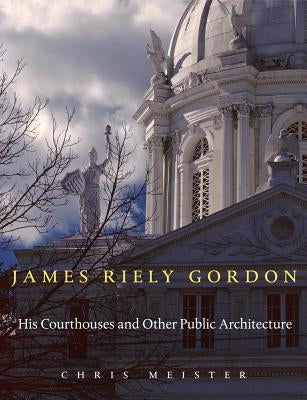1
/
of
1
Texas Tech University Press
James Riely Gordon: His Courthouses and Other Public Architecture
James Riely Gordon: His Courthouses and Other Public Architecture
Regular price
$56.55 USD
Regular price
Sale price
$56.55 USD
Shipping calculated at checkout.
Quantity
Couldn't load pickup availability
One of Texas's most talented architects in the late nineteenth century, James Riely Gordon may have been the nation's most prolific designer of county courthouses. Though Gordon's Texas courthouses made his reputation, they represent only half of a career in which we see reflected many issues and events shaping American architecture. Most notable were the effort among architects to organize their craft as a profession, the controversial Office of the Supervising Architect of the United States Treasury, the 1893 World's Columbian Exposition, and the City Beautiful Movement. Situating Gordon's career, Meister focuses on the public architecture, the pursuit of which took Gordon from San Antonio to Dallas and on to Chicago and New York City as he secured commissions in nine states. Competition was fierce, and Gordon often had to defend his reputation against scandalous charges leveled by jealous architects and unscrupulous politicians. In his interdisciplinary approach, Meister examines political, cultural, and economic forces for their impact on the finished buildings as well as on Gordon's career and exposes the political and legal wrangling so often attendant to the construction of buildings that serve as the nexus for their communities.
Author: Chris Meister
Publisher: Texas Tech University Press
Published: 10/20/2011
Pages: 384
Binding Type: Hardcover
Weight: 2.80lbs
Size: 11.20h x 8.80w x 1.10d
ISBN: 9780896726918
Author: Chris Meister
Publisher: Texas Tech University Press
Published: 10/20/2011
Pages: 384
Binding Type: Hardcover
Weight: 2.80lbs
Size: 11.20h x 8.80w x 1.10d
ISBN: 9780896726918
About the Author
Chris Meister took on the challenge of chronicling James Riely Gordon s career in 1994 while living in Houston. A writer and graphic designer now living in Royal Oak, Michigan, his research has taken him to more than fifty communities in twelve states with connections to Gordon s work."
Share


